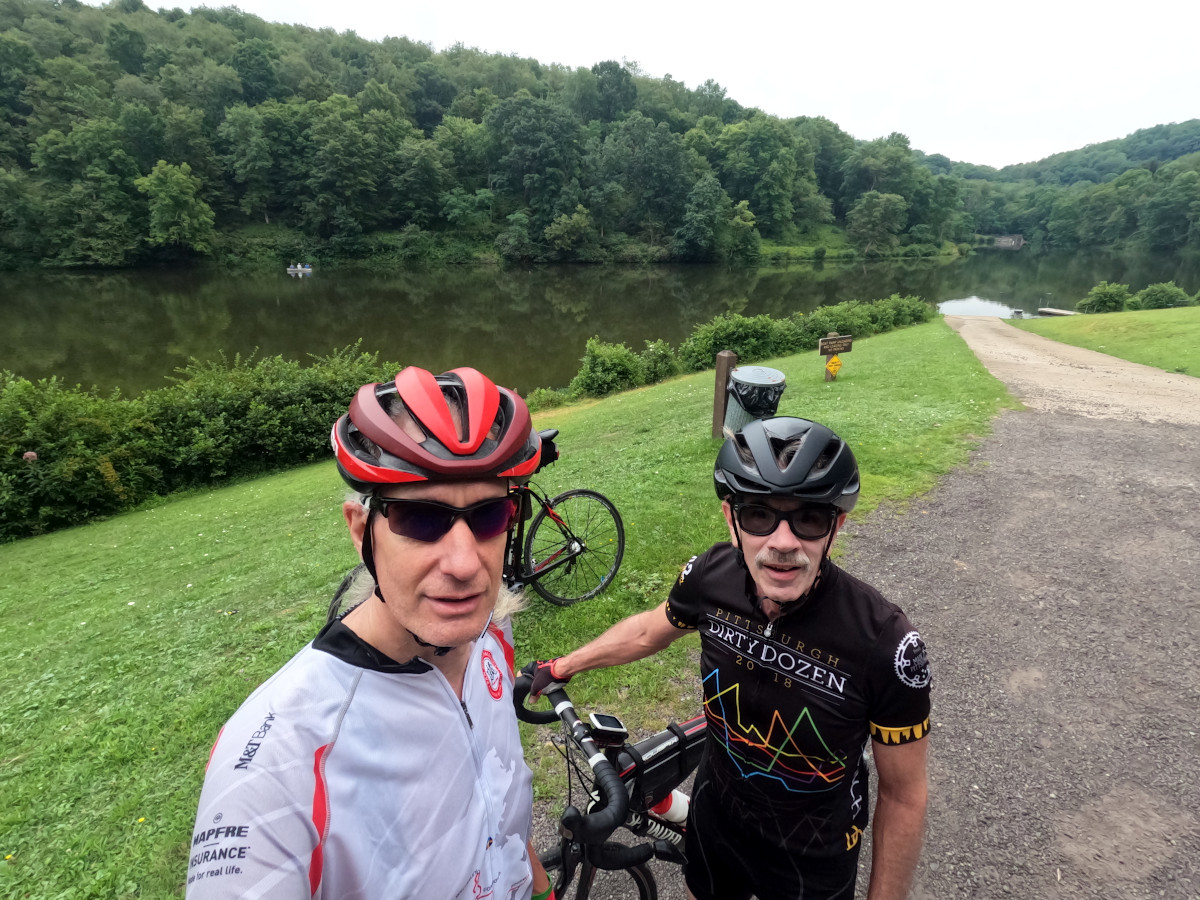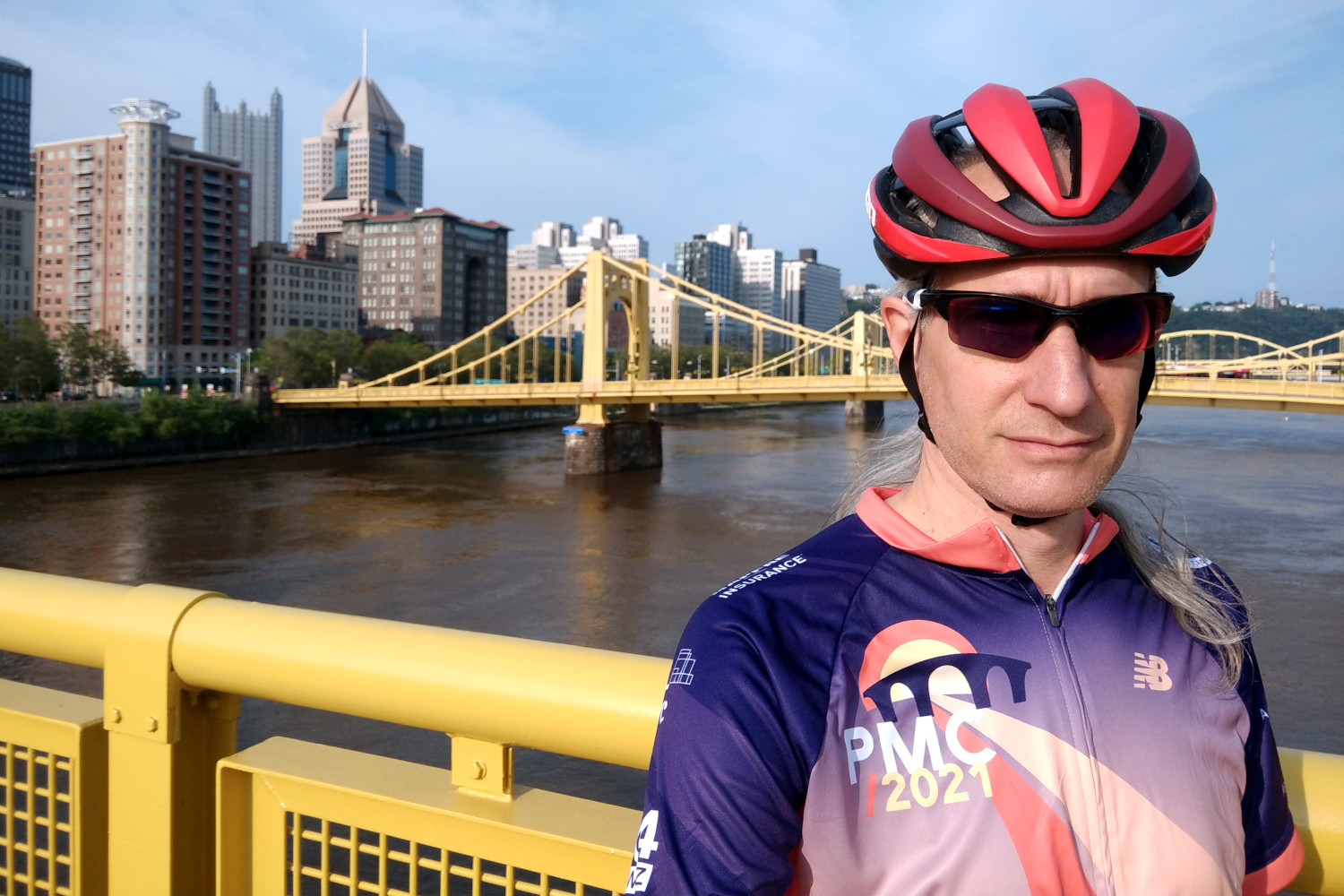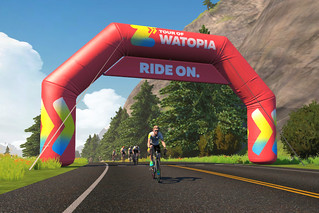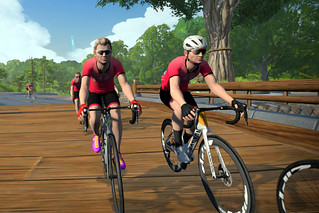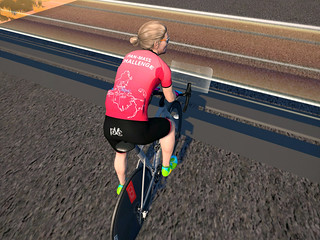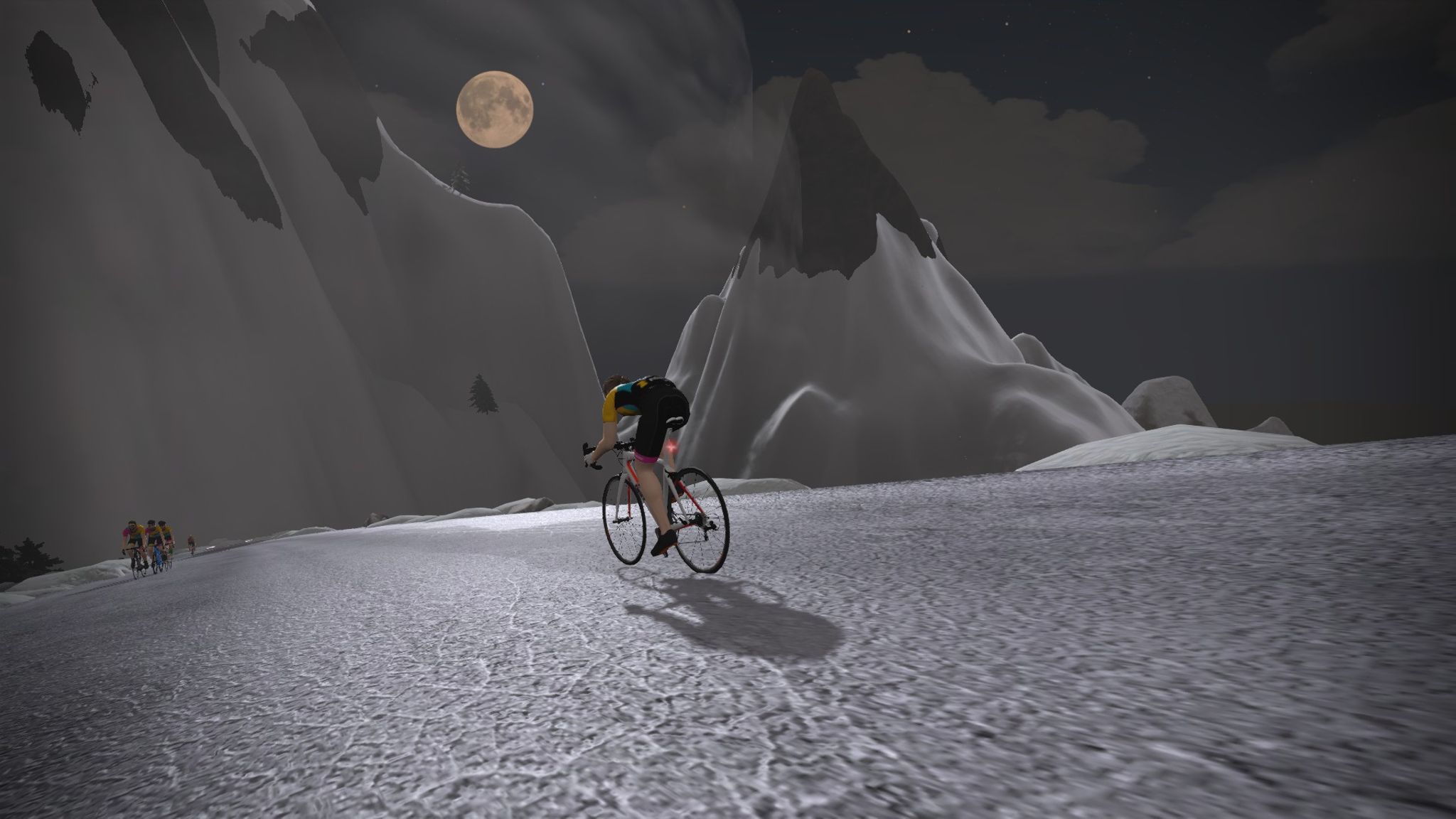Been a long time, I know. But thus far, my 2024 cycling has been uneventful but steady, as evinced by my Fitness chart, which has hovered almost unchanged since November… albeit at a level I consider reasonably active. Group rides have included ten PMC Zwift rides during the first two months of the year, which then transitioned to a dozen outdoor Friday Truancy rides as the weather improved.
Aside from just riding around, I’ve had to replace a lot of equipment due to wear and tear, including a saddle bag, gloves, three punctured inner tubes, and my heart rate monitor. My most noteworthy new purchase was a HoverAir X1 automated selfie drone, but I’ll discuss that in a separate, future blogpo.
I’d planned to undertake 2024’s first organized cycling event back in February. But as I packed the car the evening before my 2-hour drive to Hempstead, I left the interior cabin light on, and climbed into the car at 5am to discover a dead battery. Needless to say, I wound up aborting my Pedaling the Prairie ride.
With few events that early in the year, it wasn’t until this past weekend that I lined up for my first century of 2024: the Red Poppy Ride in Georgetown, 30 minutes north of Austin.
I approached it with a bit of trepidation. I’ve done no long rides this year, and an imperial century (at 161 KM) would be twice the distance of my longest indoor (82 KM) and outdoor (72 KM) rides thus far. I’ve also only done one century in the past 18 months; that was last September’s Livestrong Challenge, which pushed me beyond my limit and resulted in ignominiously puking my guts out into a trash bin at the finish line. That left me wondering if I am still physically suited to riding 100 miles now that I’m 60 years old.
After the half-hour drive to the start, I picked up my bib number (a grossly inappropriate #357) and joined a large field of several hundred riders, although most were doing shorter routes. Typical of Hill Country mornings, the sky was about 70 percent obscured by thin clouds, and the temperature hovered around 20°. You couldn’t ask for a better forecast for a long ride.
Having suffered three flats in recent months, I imagined that my rear tire wasn’t holding air pressure well and chose ask the mechanical support tent to replace my inner tube at the last minute. That work left me with just enough time to line up at the start with my buddy Jordan and his friends John, John, and Bob.
While swapping my tube, I heard snippets of the organizer’s pre-ride announcements, which mentioned some rough gravel sections of the route, a detour, and route markings. He said something about the 100-mile route coming back the to the start and then going out again on a second route to complete the full distance. I was already confused about the route because the organizer hadn’t provided a downloadable GPS course, while the cue sheet and two maps on the event website all disagreed with one another. And none of them had shown a mid-ride return to the start.
So as we rolled out at 8am, I wasn’t just worried about aging and my fitness, but also my tire, the route and any detours, the gravel sections, and the route arrows.
The first 22 km of the ride included a couple small hills before the course flattened out. More taxing was the 20 km/h headwind, which would persist through the north- and east-ward first third of the ride. We were quickly onto empty country roads through endless farmland and cornfields already showing ears with silks… in mid-May!
I was taking it easy, but keeping up with the pack. My friend Jordan disappeared down the road, but his outgoing buddy Bob and I chatted off and on as the miles ticked away. I zipped past the first two water stops before finally pulling off at rest stop #3 for a 5-minute break. It was 9:20am, and I’d covered 37 km.
Having finished the northeast-bound part of the course, we turned south. The change put the wind behind us, which was a delightful benefit on the endless false flats we covered. At 10:30am I pulled into water stop #4 for another quick refill. With 65 km down, I was on pace to complete my century in 6:10!
This was where things got frustrating. First my GoPro battery died after just 17 still photos. And 30 minutes on I felt the tell-tale squishiness of my rear tire going flat: the very misfortune that I’d hoped to avoid by installing a new inner tube. Ironically, it wasn’t due to a puncture; the leak was at the valve stem, indicating a manufacturing defect in the brand-new tube I’d gotten at the support tent.
Somehow, one of the few support vehicles pulled up almost immediately, followed – equally improbably – by the aforementioned Bob, John, and John trio. After installing my remaining spare tube, it took two of us to manhandle the tire back onto the rim, and we’d lost 20 minutes by the time we set out again. With 85 km still to go, no spare tubes, and gun-shy after my recent spate of flats, I decided it would be safest to continue riding with these guys, who were doing a more relaxed pace than I had been.
Having just had a long break, we skipped nearby stop #5 and rode on to stop #6, where we arrived just after noontime with 99 km on the odo. There was still some high overcast, but much of the fog had burned off, and temperatures had climbed moderately toward 26°.
Along the way, one of the Johns and I discussed the route, because none of the riders or support staff had any idea which of the several conflicting routes was the “real” one. Fortunately, John’s plan and my route gleaned from the cue sheet were in agreement, so we committed to that option, and to hell with the official route, whatever it was.
On the following segment, we endured about a mile of gravel road (where I fretted about my tire), followed by a gulley where Opossum Creek was just high enough to spill over the roadway, forcing a ginger water crossing. Along the way, Bob and the other John peeled off to complete shorter routes; but the remaining John and I were joined by another century rider named Dodge.
We rolled into rest stop #8 at 1:26pm, having completed 125 km. I was starting to feel the effort in my legs and traps. The whole day my Garmin bike computer had steadily predicted – based on my previous training – that I’d run out of stamina after 115 to 120 km, and it was eerily accurate.
This was actually the same location as stop #1, so we were pretty close to the start. But in order to complete the full century route, we needed another 35 km. This was the dubious part of the route, but the three of us agreed to follow the cue sheet, which did a 28 km loop by doubling back and rejoining the roads we’d already ridden. That included a second passage of the short gravel section and the Opossum Creek crossing, where I dunked my cycling sandal-clad feet in the stream to cool off.
And in no time (about 70 minutes, akshually) we rolled right back into the same rest stop, arriving at 2:50pm, now with just 9 km left to go.
After a minimal rest we knocked out the final segment back to the start/finish, hitting 100 miles (161 km) just before the end, celebrating Dodge’s first-ever 100-mile ride – and my 109th!
Reflections
While I can’t say this ride was spectacularly special, it did provide some memorable elements.
Most importantly, it gave me back my mojo, after such a difficult experience on my last century, eight months ago. It proved that – despite my age – I still have the strength to complete a 100-mile ride, even early in the year and in the absence of adequate training rides.
One of the reasons why it wasn’t a more painful experience is that riding with Bob and John forced me to pace myself. Although I thought I was being conservative at the start, my average power riding solo before I flatted was 152W, while after I flatted and joined them it was 112W.
My only physical complaints were growing pain in my traps toward the end of the ride, and saddle irritation in the days following.
One mistake was that I forgot to take the electrolyte caplets I’d brought along. That wasn’t an issue thanks to the temperate weather, but I don’t want to overlook that in future, more challenging (i.e. hotter) events.
In terms of equipment, the obvious issue was riding on an untested inner tube and worn tire. The entire second half of the ride was tinged with fear that I might have a second flat, but my backup tube performed flawlessly. But I do need to practice re-seating my tire on the rim, and am considering trying out a set of Pirelli P-Zeros over the tight-fitting Conti GP5000s.
And I can’t let it pass that I finished the 7½-hour ride with 56% battery charge left on my Garmin cycling computer, thanks in part to the 45 minutes of charge gained from its built-in solar panel. It’s nice no longer needing to carry a USB power bank and plug it in halfway through a long ride. And the unit’s stamina estimates again proved surprisingly accurate.
But the biggest worry and inconvenience was the organizer’s poor communication of the ride route. The overview map depicting all half-dozen courses was unclear. The 100-mile route map was incorrect, only showing an 86-mile route with no inner loop. The cue sheet included that inner loop, but that contradicted the other two maps. And the verbal announcement at the start said something about returning to the start, which wasn’t on the cue sheet or any map!
Out on the road, the half dozen routes were marked by colored arrows, but no one had labeled which color arrows went with which distance, so when they diverged, riders had to guess which arrow to follow. At every rest stop, riders were asking which route was correct, and the volunteers couldn’t do anything but point at the map. And after all that, the arrows painted on the road veered off and went in yet another direction altogether!
Of course, all this would have been avoided if the organizer did what every other event does: provide GPS route files that can be downloaded to one’s bike computer. I have no idea why the organizer neglected to offer this basic service, especially when their vague maps and cue sheets and arrows all contradicted each another. But setting that frustration aside, in the same way as I did during the ride…
I did enjoy the event. It had been nearly two years since I had a satisfying century ride, and I really needed the confidence boost that this one provided. I’m glad I did it, and glad to have my first century of 2024 under my belt. And I expect to return to the Red Poppy Ride, albeit after taking extra precautions to clarify the intended route.

































